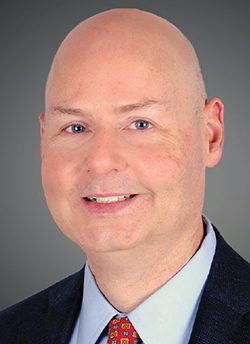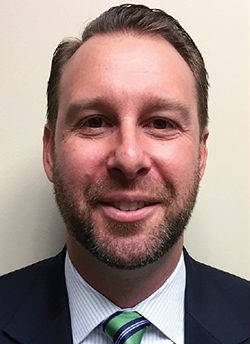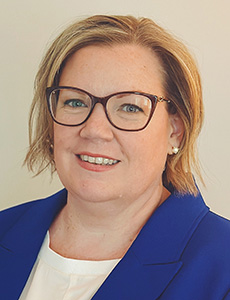The Top 6 Construction Insurance Brokers of 2019
Andy Bullock, Senior Vice President, Marsh
When the owner of an oft-delayed project lost its owner-controlled insurance program, the project faced further delays and ballooned insurance costs. The owner gave Marsh’s Andy Bullock 45 days to bind $100 million of general liability limits covering all the project’s contractors and eight years of completed operations coverage and backdated coverage for some faulty completed work that the cancelled OCIP’s insurer deemed potentially uninsured.
Bullock met all the demands, said the general contractor’s risk manager. Otherwise, a shutdown was possible, and contractors would have had to individually purchase coverage — multiplying total insurance costs “several times.”
Another client lauded Bullock for crafting a program for the $2 billion design/build portion of a $5 billion public/private partnership project with substantial third-party risk and highly prescriptive insurance requirements, noted another contractor’s risk manager.
Bullock’s solution for the primary and excess casualty coverage “included utilizing a version of Marsh’s Project Edge product with broad terms and conditions drafted to include contract compliant wordings, as well as utilizing the Marsh Xsellence excess form in the lead excess and all of the excess policies included in the $200M limit,” the client said.
Plus, days before insurance verifications were due, the developer’s broker said it could not obtain the required auto liability coverage. Bullock found contract-compliant coverage within 24-hours, preventing financial and reputational repercussions, the client said.
Read More: 11 Critical Risks Facing the Construction Industry
Trish Kawa, Project Risk Leader, Marsh
A client of Trish Kawa’s tasked her with researching three years of workers’ comp data that an insurer had misreported. The errors negatively affected the experience mod of one of the client’s providers. Kawa “spent a tremendous amount of time to research and reconcile all the proper reported payrolls by project, class code and state,” the client said. That “generated about $1.2 million of found WC premium refunds — a major windfall.”
For New York University, Kawa quickly pulled together a six-year owner-controlled insurance program that is saving NYU 30 percent of the cost a contractor would have billed, noted Michael Liebowitz, senior director of insurance and risk management.
“In addition, we were provided expert safety services as part of the premium,” which increases savings and will attract better contractors, Liebowitz said.
Another client with a major upcoming project adamantly opposed an OCIP because of a bad prior experience. But Kawa refused to go away quietly without underscoring the problems with that mindset, the client noted. Kawa “was able to explain the benefits of uniform coverage with excellent carriers,” the client said. She also illustrated the client’s insurance requirements of engaging small women- and minority-owned contractors could not be met unless those firms benefited from an OCIP’s cost savings.
To assuage the client, Kawa proposed a general liability OCIP with no workers’ comp coverage, the source of the client’s previous negative experience.
Jonathan Kosin, Michigan Construction Practice Leader, Aon
TopBuild Corp. faced a “challenging risk management situation” with its “delicate” acquisition of a major competitor, said James Caccavale, director of risk, health & safety. Jonathan Kosin recommended and secured coverage TopBuild had never purchased: buyer-side reps and warranties insurance, which covers certain breaches a seller might make during a transaction. R&W benefits the seller by reducing or eliminating its escrow.
Caccavale praised Kosin for his leadership and education skills, which made TopBuild’s management more comfortable pursuing the sizable transaction.
For another client acquiring two companies with different risks than its own, Kosin encouraged the insurers to explore their portfolios for losses associated with similar risks: “When the search came up empty, he had leverage to get [double-digit] premium relief” amounting to six figures, compared to the original proposal, the risk manager explained. It also avoided having to take a higher umbrella attachment point, said the risk manager, who greatly credited Kosin for a professional honor the client recently received.
Joe Rieger, CFO for Conti Corp., also credited Kosin for making Conti’s senior management comfortable with an opportunity in a new market: Guantanamo Bay, Cuba.
“Jon was able to tell me where we had coverage and what coverage we would need to add” to ensure Conti’s protection, said Rieger, noting he originally was unsure whether any existing insurance would respond in Cuba.
Jeffrey Leadley, Regional Commercial Director, Aon
Aon’s Jeffrey Leadley created a risk financing method that looks promising enough to be used in much wider circulation than it currently is. The maneuver is using a captive as a reinsurance layer over the more traditional surety bonds that typically backstop sizable commercial financial obligations.
“It is extremely uncommon in the surety industry to utilize a captive or fronting structure since surety is indemnified credit and not risk transfer,” Leadley noted in his Power Broker® application.
That’s not Leadley’s only uncommon accomplishment. One client needed Leadley to pull off placement of surety bonds as guarantees in some foreign jurisdictions where they were previously using bank letters of credit; Leadley got it done and saved his client almost $200,000.
The client also credits Leadley with keeping his cool in highly pressurized situations.
They said Leadley “remains very calm and does not panic through the process as the deadline nears, a very level demeanor that never sparks alarm for the teams.”
“While Jeff does handle our often challenging day-to-day issues both quickly and efficiently, I believe it is what he does for us throughout the year that brings just as much value to our organization,” said another client.
“His flexible and innovative approach to problem solving has been integral in resolving issues that have allowed us to successfully build our business,” the client said.
Timothy McCaffrey, Senior Vice President, Aon
Zachry Construction Corp. faced coverage disputes over a series of claims against a policy, according to Erika Kilgore, director of risk management. After Timothy McCaffrey resolved those issues, he helped Zachry identify carriers willing to “to ensure coverage clarity before a claim occurs,” Kilgore said.
In a months-long process, McCaffrey and his team first edited policy forms to develop coverage for losses such as “contractors continuing expense and idle equipment resulting from a builder’s risk event,” said Kilgore. Then McCaffrey assembled a team from Zachry’s and the carriers’ legal, risk management, claims and underwriting departments to develop language, pricing and terms, she said.
Another client noted it faced substantial builder’s risk insurance challenges with a multi-year project involving a concentration of high-value risks in a CAT-exposed area.
All the insurance options could have resulted in “huge cost swings in the wrong direction if we could not get the insurance market to commit to a multi-year program at guaranteed rates for the full term and which was scalable to the situation,” the client said.
Despite a global search, the market that was expected to come through did not, the client explained. However, “Tim had a couple of alternatives well-prepared and ready.” The result: $5 million in savings compared to more traditional market pricing, sufficient coverage for natural catastrophe losses and a rolling master program that better enables the development team to establish budgets and project plans.
Clay Morris, Executive Vice President, Willis Towers Watson
For Robins & Morton Group, Clay Morris reviewed a subsidized builder’s risk policy that the owner of the client’s largest project purchased. The project’s coastal location is at risk to named storms, but Morris discovered the policy did not cover contractors’ storm-protection costs.
“Clay’s attention to detail on this issue helped us put better [difference in conditions] coverage in place at a cost the project owner was willing to pay us for,” said P. Benjamin Leaver, Robins & Morton’s director of finance.
The impact on the client and several large sub-contractors has been significant. The contractors have had to protect the project twice, at a cost of several hundred thousand dollars, Leaver noted.
“Without the coverage, we would have suffered profit write-downs.”
Morris-Shea Bridge Co. Inc. needed to acquire $15 million of equipment manufactured overseas, noted CFO Andy Joiner. The investment allowed Morris-Shea to complete “almost $500 million of contract work with handsome profit margins,” Joiner said.
But there was a stumbling block: The manufacturer required advance payment, but the company’s creditors wouldn’t fund the purchase until the equipment was on U.S. soil.
Morris facilitated the transaction by finding insurance that covered the equipment while it was located outside the country and in transit: “Clay immediately offered the solution and utilized his contacts to get the ball rolling to ensure we had the appropriate coverage in place both internationally and domestically,” said Joiner.
















